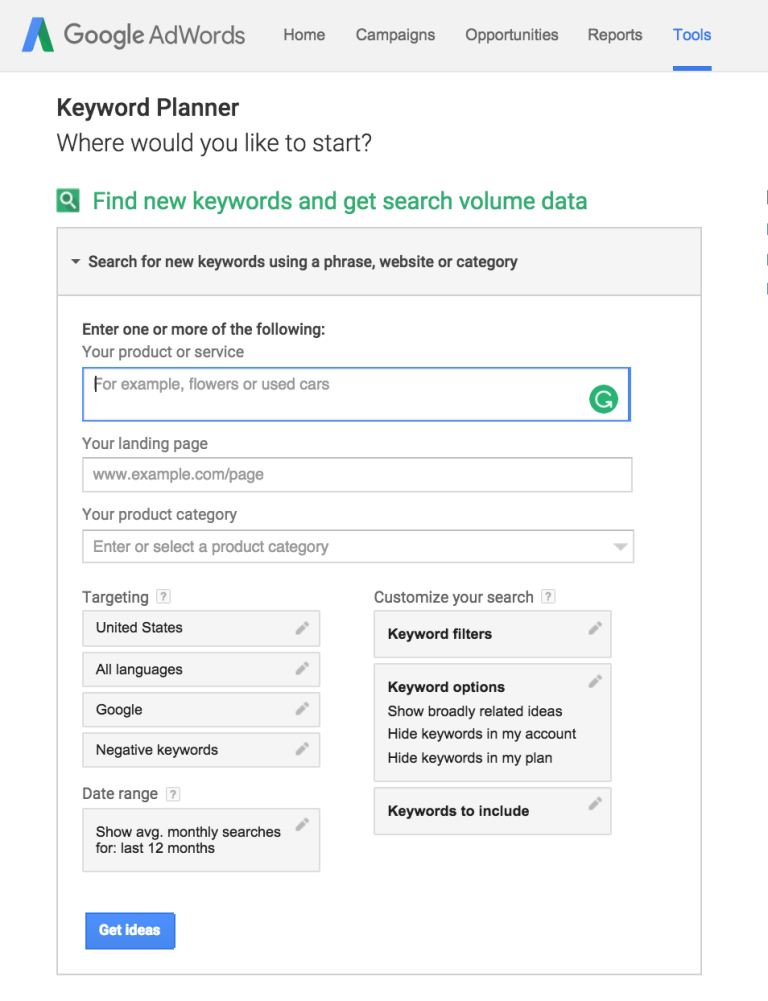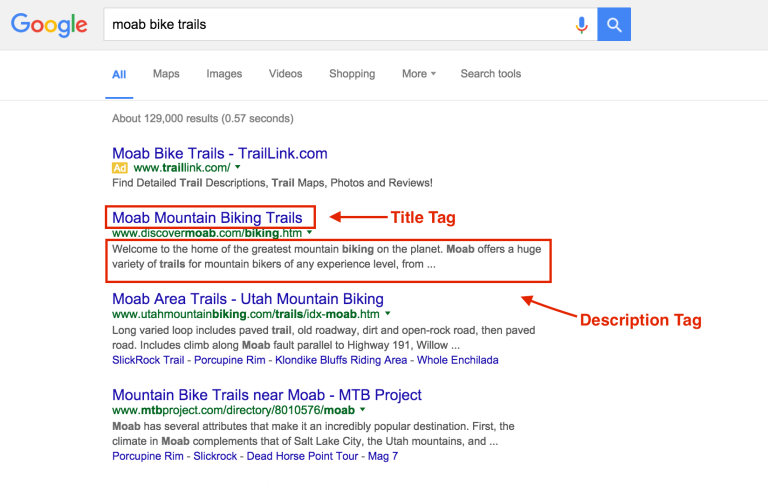Is keyword research part of your SEO strategy? Before you consider hiring an SEO agency or doing SEO on your own, it’s important to make keywords and keyword research a foundational building block for your digital marketing effort. Keywords are your opportunity to dive into the mind of your customer and get a true understanding of how your audience searches on Google.
Picking the Right Keywords
Where do you start when you begin the keyword research process? The Google Keyword Planner Tool. The Keyword Planner tool is free and available to anyone with Google Adwords account. All you need to do is signup or use your current Google account and it’s already setup for you. Although the Keyword Planner tool is specifically designed for Adwords, it gives you the proper search data without having to buy any advertising space on Google.
So how can you use the Keyword Planner Tool to find the best keywords for your organic SEO strategy? A good place to start is with your target audience. Attracting your ideal customer is a critical component of any digital marketing campaign- and the same holds true for your keyword research. Place yourself in your customer’s shoes. What problems is your product hoping to solve? How can your product or service benefit your customer?
Imagine all of the various keyword combinations your prospects may use to find your website. Type the keyword directly in the “Your Product and Service” box, as seen above. Once you click the “Get Ideas” button, Google will automatically populate a list of keyword ideas for you to choose from within the planner. There are plenty of free SEO keyword research tools out there that provide great value. Wordtracker (http://www.wordtracker.com/) and KeywordTool.IO are both very user-friendly and freemium and paid versions.
Analyze your Competition
After you’ve completed your first round of keyword research, simply type in the keywords that you would like to rank for in a Google search. A simple way to figure out how which keywords your competition is targeting is to research your competitor’s metadata. The metadata is the webpage’s SEO title and description that show up on the search engine result page. See below for an example:
Often times you will see your competitors using the same keyword that you’re targeting. Researching your competitors SEO efforts by typing in your target keywords often lead to the discovery of new keywords that may have otherwise been overlooked.
Another tool that provides insight into how your competitors rank for certain keywords is Moz’s Open Site Explorer. It’s a great tool for competitive SEO research. Open Site Explorer will a show how your competitors are performing on search engines and which sites are linking to them.
Short-Tail Keywords vs. Long-Tail Keywords
SEO keywords are placed in two broad categories- short-tail and long-tail keyword phrases. Short-tail keywords are very simple and concise. They are roughly two words that are very general and tend to attract a large amount of monthly searches.
On the other hand, long-tail keywords are more complex terms with a lower search volume. Long-tail keywords tend to have a higher conversion rate compared to their short-tail equivalent.
A great example that explains the difference between short-tail and long-tail keywords is the term “running shoes”. The term “running shoes” is very broad and doesn’t do a great job of describing what type, color, and size of the running.
As you can see from the image above, the broad term “running shoes” collects 110,000 national searches per month with a high competition and $1.20 cost per click.
The term “black running shoes” brings the average search traffic down to 3,600, which is substantially lower compared to the term, “running shoes”. However, a person searching for the long tail term, “black running shoes” is more likely to convert due to the search specificity.
When formulating an organic SEO plan, it typically makes sense to take a more balanced approach with a blend of long and short-tail keywords. Keep in mind that the longer tail the keyword, the higher your return on investment.





